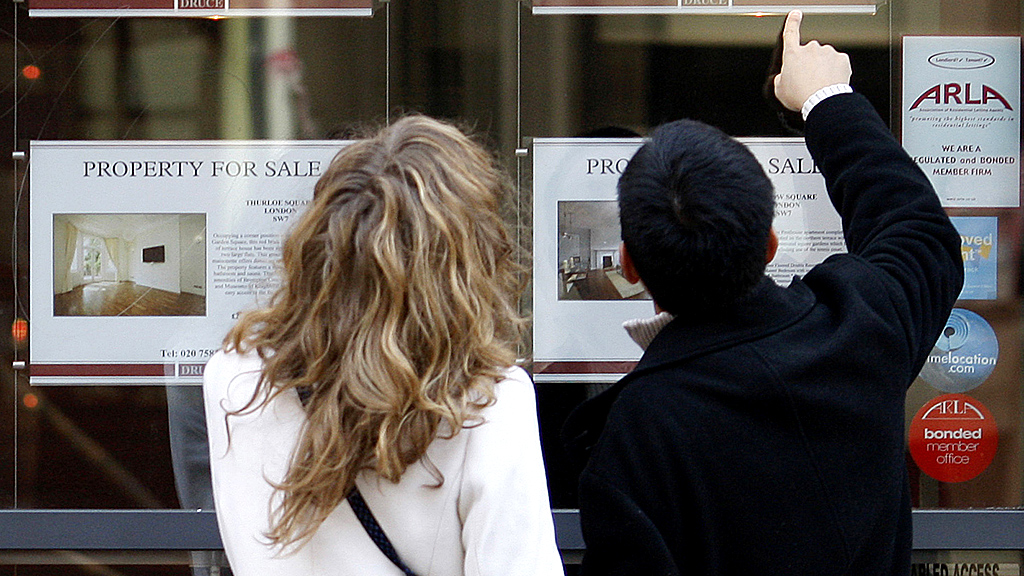Scottish cities lead UK property price growth
Homes in Scottish cities have clocked the highest price rises in the UK over the last decade, while the lowest growth was suffered in Northern Ireland and the South East, new research shows.

Demand for urban living across the UK has caused property prices in cities to rise almost 10 per cent more than in towns over the past decade.
Sale prices for city properties have increased by 38 per cent since 2002, while towns notched up growth of 29 per cent, according to the Halifax Cities Review.
The figures show that the towns which were awarded city status by the Queen to mark the millennium, the Golden Jubilee and the Diamond Jubilee, have outperformed the country as a whole.
Who would live in an office like this?
The government is considering relaxing planning rules to make it easier to turn empty offices into houses to ease the UK housing crisis.
But how many people could the plan help?
Read more here
Martin Ellis, housing economist at Halifax, said: “There is certainly an increasing demand for urban living. There are more jobs and it is more convenient. Whether it is something that will be sustained remains to be seen.”
Since the housing market crash of 2007, city homes have seen a 17 per cent price cut, beating the rest of the UK which has seen prices fall by 23 per cent.
Cities – defined as a “large” town or one with a cathedral – recorded the sharpest rise in prices in Scotland and northern England, with four Scottish cities in the top five.
Property prices in Aberdeen have climbed the most since 2002 with a 94 per cent increase, benefiting from the importance of the oil sector to the local economy. Inverness homes are up 81 per cent, Dundee 73 per cent and Perth 70 per cent.
Houses in Bradford and Hull recorded the highest growth in England, with 77 per cent and 68 per cent respectively.
The lowest growth was recorded in Northern Ireland and the South East, with Southampton, Oxford and Chelmsford all in the bottom 10.
According to Mr Ellis, traditionally cheaper northern cities are providing an increasingly appealing home for jobseekers in the current economic climate, compared with high-profile cities such as London, Manchester, Birmingham and Edinburgh, which have not recorded a notably steep rise in prices.
He added that the majority of towns awarded city status to mark special occasions, such as Brighton & Hove and Wolverhampton, have benefited from this increasing appeal and outperformed their region.
“Newer cities have benefited from their status and perceived prestige, which has attracted investment, creating jobs and therefore boosting housing demands.”
Cities with the highest house price growth, with average price and percentage rise over 10 years:
1. Aberdeen, £179,607, 94 per cent
2. Inverness, £156,832, 81 per cent
3. Bradford, £106,015, 77 per cent
4. Dundee, £120,086, 73 per cent
5. Perth, £162,259, 70 per cent
6. Hull, £101,914, 68 per cent
7. Carlisle, £120,557, 65 per cent
8. Durham, £133,463, 65 per cent
9. Swansea, £120,483, 58 per cent
10. Stoke On Trent, £117,131, 58 per cent
-
Latest news
-
Taylor Swift’s new break-up album breaks records3m

-
NHS trust fined £200K for failings that led to death of two mental health patients3m

-
Sunak vows to end UK ‘sick note culture’ with benefit reform3m

-
‘Loose talk about using nuclear weapons is irresponsible and unacceptable’, says head of UN’s nuclear watchdog3m

-
‘There wasn’t an Israeli attack on Iran,’ says former adviser to Iran’s nuclear negotiations team7m

-




